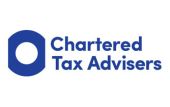
EOTs: changes in the Finance Bill
Key points
- Selling a company to an employee ownership trust has become increasingly popular due to the reduction in the benefit of business asset disposal relief.
- Selling shares into an EOT is free of capital gains tax.
- With the autumn Budget announcement of an immediate rise in capital gains tax rates, there is now a 24% tax saving on sale to an EOT.
- These trusts are really only of benefit to the vendor shareholders, not to employees.
- The representations made to the consultation on the EOT regime during 2023 appear to have been ignored.
Selling a company to an employee ownership trust (EOT) has become increasingly popular over the last few years, largely due to the reduction in the benefit of business asset disposal relief since 2020, and also as people have become more aware that selling shares into an EOT is free of capital gains tax, regardless of the scale of the transaction. The benefit is enhanced by the announcement of an immediate rise in capital gains tax rates, so there is now a 24% tax saving on sale to an EOT.
There was a consultation on the EOT regime during 2023, but since the consultation closed that autumn we had heard nothing, despite a number of fiscal events. So it was a slight surprise – particularly given the change of government and expectations of a radical budget on 30 October – that a policy paper and draft legislation (tinyurl.com/4w6sm4vs) were published, along with the summary of responses to the consultation (tinyurl.com/2zadw5u4).
Many of the changes had been trailed in the original consultation document (tinyurl.com/u838rw5f). Sadly, the representations made by the representative bodies, and by our firm, appear to have been ignored. We understand that further representations will be made, and we hope that some further improvement to the system can be achieved.
Date of changes
Most of the changes take effect in relation to sales to an EOT made on or after 30 October 2024.
Trustee residence requirement
The first of three new relief requirements and two associated disqualifying events is for the trustees of the EOT to be UK resident (new TCGA 1992, s 236H(4)(aa)). The relief requirement is that they must be resident in the UK on the date of sale into the EOT and must continue to be UK resident for the remainder of that tax year. Furthermore, if the trustees cease to be UK resident, that is now a disqualifying event, so the condition must, in effect, be satisfied forever.
For the period following the sale into the EOT, during which the relief can be withdrawn from the vendors (see below, as this period has been extended to four years), the new disqualifying event is that ‘the trustees of a settlement cease to be resident in the United Kingdom’ (new TCGA 1992, s 236O(2)(aa)). But for later periods, where a disqualifying event triggers a deemed disposal and reacquisition by the trustees, the legislation (new TCGA 1992, s 236P(3A)) points us to TCGA 1992, s 80, which provides for a deemed disposal of the assets of a settlement if the trustees cease to be resident in the UK.
This rule applies to all the settled property of the settlement, whereas normal disqualifying events under TCGA 1992, s 236P only apply to the shares on which relief has been granted on sale into the EOT. So, in this circumstance, the tax hit for the trustees could be greater if they become non-resident than would be the case for other disqualifying events. Whilst this might seem harsh, it effectively recognises that the entire trust property will cease to be within the charge of capital gains tax once the trustees become non-resident.
If the trustees cease to be UK resident solely because of the death of a trustee, there is a six-month grace period, so that, if the trustees become UK resident within that time, the disqualifying event is ignored.
Trustee independence requirement
The second new requirement is the trustee independence requirement (new TCGA 1992, s 236LA). This requirement is breached if 50% or more of the trustees are excluded participators, and excluded participators must also not control the settlement.
Excluded participators are deemed to control the settlement if one or more excluded participators, acting without the trustees who are not excluded participators, are entitled, either under the trust deed or by general law, to do any of the following:
a) dispose of, advance, lend, invest, pay or apply settlement property;
b) vary or terminate the settlement;
c) add or remove a person as a beneficiary or to or from a class of beneficiaries;
d) appoint or remove trustees or give another individual control over the settlement;
e) direct the exercise of a power mentioned in sub-paragraphs (a) to (d).
Excluded participators are as defined in TCGA 1992, s 236J, as broadly meaning the vendor shareholders, anyone who holds 5% or more of the shares of the company (or of shares of any class) and any employees connected with any such persons. For the purposes of this new rule, however, excluded participators does not include a person who is connected to an excluded participator solely because they are a trustee, and the excluded participator was a settlor. Otherwise, all the trustees would potentially be excluded participators, which would mean that the trustee independence requirement could never be satisfied.
Where there is a corporate trustee, the rule is that 50% or more of its directors must not be excluded participators.
If the trust ceases to meet the trustee independence requirement, this is now a disqualifying event (new TCGA 1992, s 236O(2)(ba) and s 236P(2)(ba)). Again, though, there is a six-month grace period if the condition is breached due to the death of a trustee, or by the death of a director of a trustee company.
The summary of responses specifically states that existing arrangements will not be disturbed in either case. So, there is no need to amend or unwind any existing arrangements where the trustees are offshore or where the majority of trustees are excluded participators. This is slightly surprising, as it would have been quite simple to require existing trusts to make appropriate changes to comply with the new rules, perhaps giving them a grace period of, say, six months.
Consideration requirement
There is another new requirement, that the trustees must take all reasonable steps to ensure that they do not pay more than market value for the shares, and that any interest payable on deferred consideration does not exceed a reasonable commercial rate (new TCGA 1992, s 236H(4)(ca)). This idea was not mentioned in the consultation document, but the response document tells us that there were concerns about business owners pushing the prices above market value, to maximise their benefits on sale to the EOT.
While that may be true, we have always understood that the trustees are bound by their duties to the beneficiaries of the trust not to overpay for the shares – or to overpay interest – so it’s difficult to see why this is necessary from a tax perspective. Furthermore, if the trustees pay more than market value of the shares, not only are they breaching their fiduciary duties, but one would expect there to be an employment-related securities charge on the vendors who are receiving more than market value for their shares (see ITEPA 2003, Chapter 3D: Securities disposed of for more than market value).
From a practical perspective, we have always explained to our clients that the trustees must agree to the price paid for the shares and that, if only one valuation is to be carried out, it would be preferable to have that commissioned by the trustees, rather than the vendors, to ensure that they do not overpay for the shares. We suspect that the main impact of this new requirement will be to concentrate the minds of other advisors, rather than to have any impact on the availability of the relief. There is also a potential conflict of interest if the firm that is advising the vendors regarding the tax conditions and HMRC clearance is also asked to provide a valuation for the trustees.
Extended period for disqualifying events
Until the new rules were announced, if there was a disqualifying event from the date of disposal to the end of the following tax year, the tax relief was lost to the vendors, or withdrawn if already claimed, so they became chargeable to capital gains tax in the normal way (TCGA 1992, s 236O). This one-year period is now extended to the four tax years after the disposal, so that any disqualifying event in any of the four tax years following the tax year of disposal will mean that the tax relief is lost. This was a slightly surprising measure – in that it was not mentioned in the consultation document as a problem area – but it seems to have been one of the issues raised in responses to the consultation, and the extended period will clearly help to promote long-term ownership by EOTs, as the original vendors will be concerned to ensure that there is no sale by the trustees within the four tax years following their disposal.
We wondered if it might also have an anti-avoidance impact on existing cases, perhaps where the trustees are already offshore, so that the sale by the trustees within a relatively short time after the sale into trust could effectively escape UK taxation. However, since this new provision only applies for sales to an EOT from 30 October, when all new trustees are required to be UK resident, anyway, it is hard to see this as a specific anti-avoidance measure.
Information requirement
Claims for relief must now include the number of employees of the company or group being sold to an EOT and the consideration for the transaction, including the split between immediate and deferred amounts (new TCGA 1992, s 236H(7)(ba) and (d)).
If the claimant is not able to ascertain the number of employees, the information requirement is treated as met if the person has taken ‘all reasonable steps’ to ascertain the number and the claim contains a statement to that effect (new TCGA 1992, s 236H(7A)).
This requirement applies to claims made on or after 6 April 2025, so there will be some degree of retrospection, where claims are made after that date in respect of disposals to an EOT before 30 October 2024.
Income tax free bonuses
The rules relating to eligibility for a bonus free of income tax of up to £3,600 a year also have a series of requirements, which are similar to but subtly different from the relief requirements for capital gains purposes. There is an equivalent of the equality requirement which means that every employee of the company must be eligible for such a bonus. This could include a requirement to pay bonuses to non-executive directors or to executive directors of the company, even though they are often already well paid. So, in a welcome change, the participation requirement in respect of these bonus payments is amended to allow the directors of the company to be excluded from such bonuses (new ITEPA 2003, s 312C(2A)).
Distributions exemption
This is an area which has concerned us for quite some time, so the proposed changes here are helpful, although they do not go far enough. The issue is that the only way to fund these transactions is for the company to provide the trust with the money. But, technically, any payments from the company to the trust have to be out of distributable reserves, so they should be treated as distributions for both company law and tax purposes, meaning that the trustees should be subject to income tax.
This has hitherto been dealt with by something of a fudge whereby, so long as amounts paid by the company to the trustees were described as ‘contributions’ – rather than ‘distributions’ – HMRC would accept that they were not taxable as distributions and would provide a pre-transaction clearance under the non-statutory facility to that effect. This ignored the correct statutory position, which was the payments out of distributable reserves to the trustees must clearly be treated as distributions by virtue of CTA 2010, s 1000. (The response document says that ‘The government now recognises that the better reading of the legislation is that the payments are distributions’!)
To resolve the issue, we now have a rule that is not, strictly, an exemption, but has more or less the same effect. If the trustees receive a distribution from the company, on or after 30 October 2024, they may claim to deduct certain acquisition costs from the distribution, so that only excess distributions will be charged to income tax on the trustees (new ITTOIA 2005, s 401ZA). This new relief applies to the consideration for the disposal, interest on deferred consideration that does not exceed a reasonable commercial rate and any liability to stamp duty or stamp duty reserve tax. So far, so good.
However, we are disappointed that the relief does not extend to other unavoidable costs of the trustees, which were specifically mentioned in our responses to the consultation, as well as those of other respondents (and which we will follow up, now that we have seen the draft legislation). Specifically, we identified three main issues:
- The trustees will have incurred professional fees on acquiring the shares, particularly given the new requirements for the trustees in relation to the sale price and interest rates.
- There may be financing fees, particularly if there is third-party debt involved in the transaction.
- We cannot understand why the relief does not apply to fees paid to professional trustees! This is an obvious area that needs revisiting, as many of the concerns about EOTs have been around having ex-shareholders and employees as trustees, but this lacuna in the proposed rules will simply discourage the use of professional trustees.
The point we make here is that these are usually not discretionary costs, and taxing the payments by the company to the trust at nearly 40% means that funding the trustees’ expenses will cost nearly twice as much as they should. Alternatively, companies will still need non-statutory clearances to treat payments to trustees as ‘contributions’, not ‘distributions’, to cover costs that are outwith the exemption, which leaves us more or less back where we started.
Again, the new rule has no impact on existing arrangements. The response document says that ‘HMRC will remain bound by and continue to honour any clearances given on the treatment of these payments’. Even if clearances were not sought, ‘HMRC will not seek to disturb the treatment of contributions to existing EOT trustees’, so long as the contributions were used to pay for the shares (and associated costs) and that the consideration did not exceed market value.
The bigger issue here is that HMRC will now, we assume, treat all payments to trustees as being distributions. So, if the company has to make contributions to the trustees to fund costs not covered by the new rule, those contributions will be charged to income tax as dividends to the trustees! Unless the proposed new rule is amended to allow other legitimate costs of trusteeship, trustees may well be worse off than they were before.
Clearances
As readers of our previous articles will know, we usually apply for a statutory clearance (under ITA 2007, s 701) that the transactions in securities rules do not apply, as well as non-statutory clearances that contributions to EOTs will not be treated as distributions and that the benefits to participators rules (CTA 2010, s 464A) will not apply.
There will be no need for the first of these non-statutory clearances in the future and the response document also says that HMRC will no longer provide non-statutory clearances about the benefits to participators rules from 30 October 2024. The main reason given is that, provided an EOT is established for genuine commercial reasons, there should be no tax avoidance purpose present, so that s 464A would not be in point, as the motive test will not apply.
Thoughts and conclusions
Overall, the package closes some actual or perceived loopholes but singularly fails to address the fact that these trusts are really only of benefit to the vendor shareholders, not to employees, a point we made in our responses a year ago.
While the vendors get to sell their business completely free of capital gains tax, the best direct benefit the employees can hope for is a bonus of up to £3,600 a year free of income tax, but still carrying a charge to National Insurance (a figure that has not changed since 2014). This would be a welcome benefit to low-paid employees, albeit less so to more senior staff, but it can pale into insignificance compared to the benefits of a tax-free sale of the shares in the first place (the consideration in our largest transaction was £106m).
The issue is made worse by double taxation: if distributions are made to the trustees and passed on to the beneficiaries, the trustees would pay income tax on the distributions and amounts paid to the employees would be treated as earnings, on the basis that the beneficiaries only benefit from the trust because they are employees of the company (Brumby v Milner 41 TC 583). Similarly, if the shares are sold, the trustees will pay capital gains tax (currently at 24%) and any residue distributed to the beneficiaries will, again, be taxed as earnings.
The main indirect benefit we can see from EOTs is that, since there is no incentive to distribute excess profits to the trustees, it makes more sense to recycle those profits into the company, including paying employees better than their competitors. But this still does not feel to us like a form of real employee ownership.
At the very least, we would like to see the elements of double taxation removed and we also believe that it would be appropriate for employees to be able to share in the profits of the company as dividends, as if they were shareholders. This could be achieved in a couple of ways. Firstly, distributions to the trust could be declared to be tax-free, to the extent that they are then passed on to the beneficiaries, and the beneficiaries could then be taxed if they had received dividends from the company. Alternatively, perhaps it would make more sense to charge the trustees income tax on the distributions and anything passed on to the beneficiaries should then be treated as tax paid. This second approach would, we believe, prevent large numbers of low-paid employees of EOT owned companies falling into self-assessment.
We would also like to see a similar approach to distributions to beneficiaries if the trust sells the shares, so that the trustees will pay capital gains tax and any amounts distributed to the beneficiaries will be treated as being capital gains already tax paid. While we accept that such an approach might be at odds with the policy intention of long-term employee ownership, we still believe that taxing the employees/beneficiaries as if they own the shares is a better approach than treating everything they receive as earnings.








